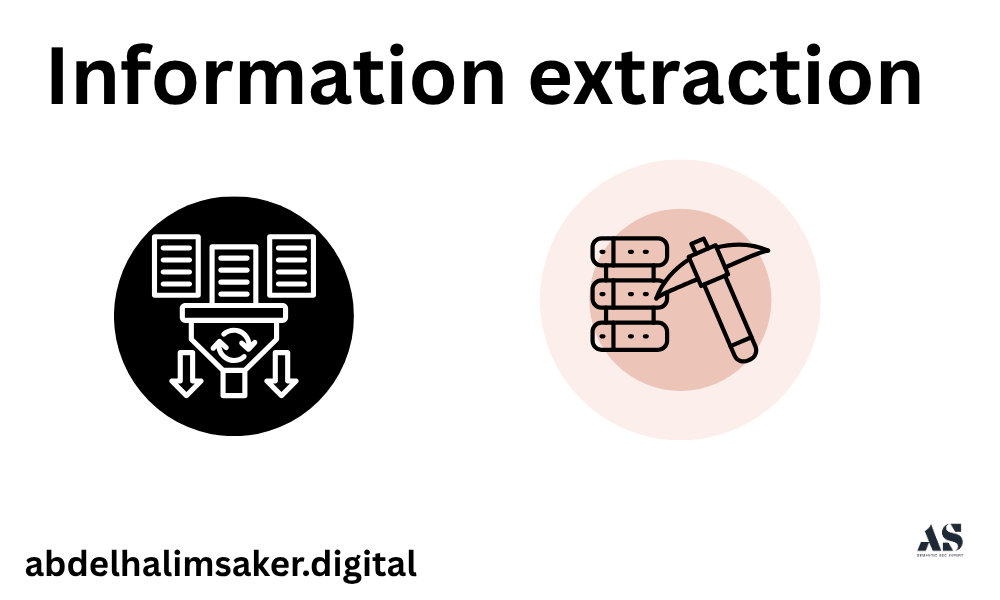
Google extracts answers by transforming unstructured web content into structured meaning through a process known as Information Extraction (IE). This process identifies entities, relationships, and factual statements within text to build accurate answers for user queries. Instead of matching keywords, Google understands context by connecting linguistic patterns, data structures, and semantic relations. This is the foundation of featured snippets, People Also Ask results, and direct answers in SERPs.
Understanding how Google extracts answers is essential for SEO professionals because it determines how search engines interpret textual meaning, rank relevance, and display responses. Pages optimized for clear information extraction are more likely to achieve snippet visibility and higher contextual weighting in semantic search.
Why Google Uses Information Extraction
Google’s primary goal is to reduce retrieval cost — delivering the most accurate answer with minimal computation. Information extraction helps achieve this by structuring text into machine-readable knowledge units. Instead of reinterpreting every query in real time, Google stores and references pre-extracted data relationships within its Knowledge Graph.
IE enables Google to:
- Identify who, what, where, when, and how within text.
- Recognize entity–attribute–value relationships that explain meaning.
- Generate contextually relevant snippets directly from content.
- Maintain query consistency across languages and formats.
The efficiency of Google’s ranking systems depends heavily on how well information is extracted and mapped into its knowledge ecosystem.
How Google Understands and Extracts Answers
Google’s extraction process integrates Natural Language Processing (NLP), Machine Learning (ML), and Knowledge Graph technology. Together, they transform linguistic input into factual representations that can be indexed, retrieved, and displayed as answers.
Step 1: Text Parsing and Tokenization
Google begins by breaking down sentences into tokens — words, phrases, and punctuation — to analyze syntax and structure. This stage identifies grammatical dependencies, such as subject, predicate, and object. Parsing enables the system to locate where the main action or fact resides in a sentence.
For example, in the sentence “Semantic SEO improves ranking performance,” Google extracts:
- Subject: Semantic SEO
- Predicate: improves
- Object: ranking performance
Each component is vectorized — converted into mathematical representations — to allow contextual comparison across billions of documents. Tokenization ensures that even complex sentences can be reduced to their factual elements.
Step 2: Named Entity Recognition (NER)
Once tokens are identified, Google applies Named Entity Recognition (NER) to detect specific entities like people, organizations, products, or places. This is a crucial step because entities form the backbone of the Knowledge Graph.
For instance, in the sentence “Google’s RankBrain interprets user intent through vector similarity,” the system recognizes:
- Entity 1: Google
- Entity 2: RankBrain
- Attribute: interprets user intent
NER models like BERT and MUM use contextual embeddings to ensure entity accuracy even when names or terms vary. This helps Google identify related entities across diverse phrasing.
Step 3: Relationship Extraction
After identifying entities, Google determines how they are connected. This stage focuses on predicate identification, the verb or relational phrase that explains what the entity does or how it relates to others.
For example:
- RankBrain improves query understanding.
→ Predicate: improves (relationship between RankBrain and query understanding)
Google assigns relationship types such as causes, is part of, belongs to, measures, or defines. These relationships form the logical structure for contextual comprehension and factual retrieval.
Step 4: Attribute and Value Identification
Every entity carries attributes — characteristics or measurable properties. Google detects adjectives, numbers, or descriptive verbs that qualify entities.
For example:
- RankBrain was introduced in 2015.
→ Attribute: introduced date
→ Value: 2015
Extracting attributes enables Google to build granular knowledge entries that feed structured results like “Launched in 2015” snippets or rich panels.
Step 5: Contextual Disambiguation
Many entities share names or meanings, such as “Apple” (company) vs. “apple” (fruit). Google resolves this through contextual disambiguation, analyzing surrounding words, co-occurrence patterns, and topic relevance.
If “Apple” appears near “iPhone,” “Mac,” or “Tim Cook,” the system identifies it as a company. If “Apple” appears near “vitamins,” “fiber,” or “nutrition,” it’s classified as a fruit.
This contextual inference ensures precision during answer generation and prevents misleading results.
Step 6: Knowledge Graph Integration
Once extracted and disambiguated, the factual units are stored in the Knowledge Graph as entity–attribute–value triples. This structured data allows Google to instantly recall verified answers without scanning entire web pages.
For example:
- (Entity: RankBrain, Predicate: introduced, Object: 2015)
- (Entity: RankBrain, Predicate: type, Object: Machine Learning System)
The Knowledge Graph becomes a memory layer that connects factual data points from millions of sources, reinforcing Google’s semantic accuracy.
The Role of Machine Learning Models in Information Extraction
Google’s extraction process is powered by models like BERT, T5, and MUM, which interpret semantic relationships beyond keyword patterns. These models analyze meaning, intent, and relationships simultaneously.
- BERT (Bidirectional Encoder Representations from Transformers) captures bidirectional context, understanding how words influence each other within a sentence.
- T5 (Text-to-Text Transfer Transformer) transforms linguistic input into structured outputs suitable for extraction tasks.
- MUM (Multitask Unified Model) extends this capability across languages and media formats, enabling answer extraction from text, images, or video.
Each of these models contributes to the evolution of how Google reads, understands, and retrieves factual data.
Why Information Extraction Defines Answer Quality
Information extraction determines how accurately Google’s responses represent real-world meaning. The cleaner the extraction, the higher the precision of answers in featured snippets and AI overviews.
Google prioritizes information that is:
- Contextually grounded — aligns with surrounding content.
- Semantically complete — covers all core attributes.
- Factually verified — cross-referenced against trusted sources.
If extraction accuracy declines, misinformation risks rise. Therefore, the integrity of the extraction process is directly tied to Google’s reputation for answer reliability.
How Google Extracts Answers from Different Content Types
Google extracts information differently depending on the content structure and data type. Structured, semi-structured, and unstructured formats each require distinct approaches.
Structured Content Extraction
Structured content uses schema markup, tables, or infoboxes. These pre-labeled elements simplify parsing because relationships are explicit. For example, a table listing “SEO metrics” provides clear attribute–value mapping that Google can interpret directly.
Pages using JSON-LD schema, especially for FAQs, HowTo, and Products, enable direct extraction without additional interpretation. This is the most efficient form of answer retrieval.
Semi-Structured Content Extraction
Semi-structured content includes headings, lists, and bullet points. Google infers relationships by analyzing hierarchy and proximity. Headings define topic boundaries, while lists represent attribute groupings.
For instance, in an article titled “Benefits of Schema Markup,” Google can easily identify list items as individual benefits. Proper semantic formatting and predicate-rich phrasing enhance extraction quality in these contexts.
Unstructured Content Extraction
Unstructured content — dense paragraphs without schema or hierarchy — presents the greatest challenge. Google must rely entirely on NLP and co-occurrence modeling to interpret relationships.
This is where passage indexing becomes valuable. Google isolates meaningful passages within long-form content to extract relevant information segments. Well-written, contextually focused paragraphs improve extraction accuracy, ensuring the passage is indexed as a standalone answer candidate.
The Connection Between Information Extraction and Featured Snippets
Featured snippets are practical outcomes of Google’s answer extraction systems. They appear when Google identifies a high-confidence match between a query and a text segment.
Extraction quality determines snippet eligibility. Google prioritizes passages with clear sentence structure, direct predicates, and verifiable attributes. Text that follows a question–answer pattern — “What is…”, “How does…”, “Why does…” — is more likely to be extracted as a snippet.
Example:
- Query: What is topical authority?
- Extracted Answer: Topical authority is the degree to which a domain demonstrates comprehensive expertise on a specific subject.
This pattern allows Google to deliver concise answers while linking back to the source for full context.
Entity-Centric vs. Sentence-Centric Extraction
Google’s answer extraction methods can be categorized as entity-centric or sentence-centric.
- Entity-centric extraction focuses on known entities and retrieves related facts from structured data or the Knowledge Graph. Example: “When was RankBrain introduced?”
- Sentence-centric extraction focuses on natural language text and isolates factual statements. Example: “RankBrain was introduced by Google in 2015.”
Understanding both helps SEO writers structure content that performs well across multiple answer types.
How Google Evaluates Extraction Confidence
Each extracted statement is assigned a confidence score, measuring the likelihood that it’s accurate. The score is influenced by:
- Source authority (domain trust level)
- Semantic clarity (explicit predicates and attributes)
- Cross-source agreement (repetition across multiple domains)
- Contextual alignment (relevance to the original query)
If confidence surpasses a threshold, the fact enters the Knowledge Graph or surfaces in a snippet. If not, it remains a latent candidate until validated by future data.
Optimizing Content for Google’s Information Extraction
To make content extractable, structure and semantics must align. Google extracts facts most efficiently when text follows consistent, explicit logic.
Best practices for answer-ready content:
- Start each section with a direct answer to the implied question.
- Use clear predicate verbs that express relationships (“defines,” “improves,” “contains”).
- Include relevant entities and attributes within the same paragraph.
- Format data in tables or lists when appropriate.
- Apply schema markup for FAQs, definitions, or factual content.
- Use consistent heading hierarchies to clarify contextual scope.
SEO writers should think like engineers: write with linguistic precision to ensure the algorithm can read the content as structured meaning, not just prose.
How Information Extraction Connects to Topical Authority
Topical Authority depends on consistent, accurate answer extraction across multiple semantically related topics. When Google extracts coherent information from a cluster of your pages, it reinforces that your site holds reliable topical coverage.
If every page in a cluster — for example, Query Semantics, Semantic Distance, and Entity Recognition — produces clear extractable facts, the domain’s contextual reliability increases. Google then weights the entire topic cluster higher in relevance and retrieval priority.
Information extraction, therefore, is not an isolated mechanism but a foundation for authority propagation across related entities and topics.
Challenges in Google’s Answer Extraction
Despite advancements, information extraction faces obstacles like ambiguity, bias, and misinformation.
- Ambiguity — Sentences with unclear predicates cause extraction errors. For example, “Google and Bing launched AI models in 2015” creates confusion about which entity launched which model.
- Bias — If the web corpus favors certain perspectives, extracted facts may reflect partial truth.
- Temporal shifts — Facts change over time (e.g., “RankBrain is new” became outdated), requiring continuous data refreshing.
SEO professionals must maintain factual precision and temporal relevance to prevent outdated or misinterpreted data from influencing extraction quality.
The Future of Information Extraction in Search
Google’s future extraction models are moving toward multimodal and context-preserving systems. With MUM, Google can extract meaning from text, images, video, and even code snippets simultaneously. This convergence leads to unified understanding — the same query answered through multiple media formats.
Advances in vector-based retrieval mean that Google no longer relies solely on textual cues but interprets semantic proximity. For instance, “When was RankBrain launched?” and “RankBrain’s introduction year” are mapped to the same contextual vector and answered by the same extracted fact.
These developments signify a shift from static knowledge to dynamic semantic retrieval, where context, intent, and information extraction merge to provide adaptive, user-centric answers.
Key Insights
- Google’s answer extraction transforms unstructured data into structured knowledge.
- The process involves tokenization, entity recognition, relationship mapping, and attribute extraction.
- Machine learning models like BERT, T5, and MUM drive contextual precision.
- Structured formatting, clear predicates, and schema markup enhance extraction readiness.
- Extraction accuracy influences featured snippets, Knowledge Graph entries, and authority perception.
- Consistent extractable information across topics reinforces Topical Authority.
- SEO writers should focus on factual clarity, predicate direction, and consistent entity signaling.
Answer extraction is where linguistic precision meets search intelligence. When you write in a way that machines can read semantically, your content becomes part of Google’s knowledge structure — not just another page in the index.
